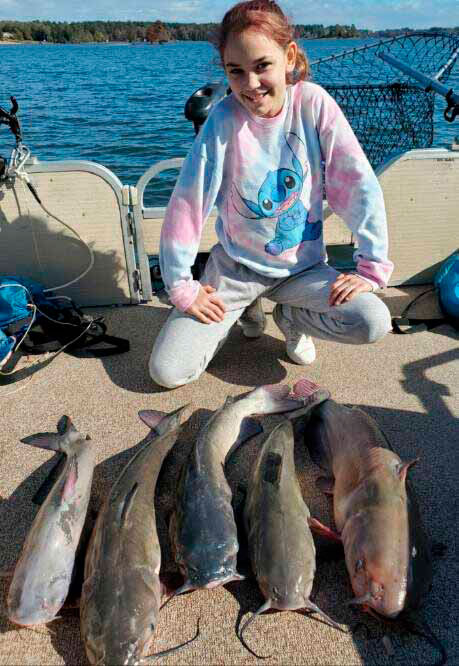
Stay flexible for Lake Murray catfish this month
The weather is variable from day to day in the fall, and that makes Lake Murray’s catfish vary their patterns, according to guide William Attaway of Pomaria, S.C.
“Some days they will be hanging on the ledges of the river channel. Some days they will be holding right on the bottom of the channel. And some days they will be laying out on the flats,” said Attaway (www.slickwilliesguideservice.com), adding that before you can catch them you have to locate them.
“I spend a lot of time riding and looking at my graph,” he said. “I also look for loons. If you see loons diving on bait, a lot of times the fish will be feeding under them. If I see seagulls feeding, a lot of times catfish and stripers will be feeding under them, too. Birds are a dead giveaway for fish. But the main thing is just watching the graph.”
And sometimes, he said, you just have to try your luck in a likely spot.
Three species of cats are common on Murray
“If you are not marking any fish, it does not mean no fish are there,” he said. “Sometimes, they just stick to the bottom, and you can’t read them on the graph. Sometimes it works to just throw out some bait and see what happens.”
At times anchoring on a likely spot will provide success, Attaway said, but primarily, he drifts this time of year with cut bait — white perch, bream, blueback herring and gizzard shad — on a standard Santee drift rig.
Attaway said catfishing on Murray provides a mixed bag, mainly channel catfish, but with plenty of blue cats and even some flatheads.
“Occasionally, we will catch a white catfish, but not as often as we used to. I like to throw the white catfish back since we don’t see many of them anymore,” said Attaway, who says fishing for catfish on Lake Murray can be “pretty slow” the first half of October as they transition from summer to fall.
“But once they start to bite, they bite good, and as long as the lake doesn’t flood they will bite good right on into the next spring.”




Be the first to comment